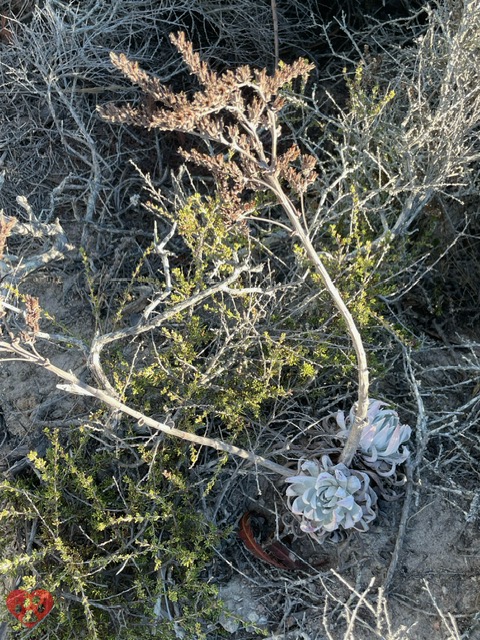Just off the coast of southern California lies a series of 8 small islands, five of which form the Channel Islands National Park. On the third day of our Lindblad Nat Geo Venture cruise, we spent the entire day exploring the highlands, beaches, canyons and Torrey pine groves of Santa Rosa Island. An unexpected wealth of small wildflowers, glimpses of the elusive Santa Rosa Island fox and an old one-room school house rounded out our hike. And we even got back in time for me to head back out on one of the last zodiac raft tours.
 |
| Bechers Bay, Skunk Point and Santa Cruz Island across the channel |
 |
| View of Bechers Bay and Nat Geo Venture in distance from Torrey Pines Loop Trail |
Click here for Los Angeles Area Eats and Hikes.
Click here for Day 1. Embarkation, Dolphins & Moonrise
Click here for Day 2a. Anacapa Island Cliffs & Wildlife
Click here for Day 2b. Santa Cruz Island Fox & Hike
Click here for Day 4. Santa Catalina Two Harbors & Avalon
From Arlington Springs Man to NPS Passport Station
Stunning landscapes and subtle wildflowers
 |
| Gully allowing a glimpse of Water Canyon Beach along Bechers Bay |
 |
| Torrey Pines coming into view |
 |
| A huge pine cone, even with the top broken off |
 |
| Wild black persimmon |
 |
| View from our lunch spot |
 |
| Santa Rosa Manzanita |
 |
| Dudleya |
 |
| Switchbacks coming down Torrey Pines Loop Trail |
 |
| Pine cones |
 |
| Black Rock |
 |
| Black Rock peninsula viewed from cliff over beach |
 |
| Cliff over beach viewed from Black Rock peninsula |
 |
| Water Canyon Beach |
 |
| Sand dune on Water Canyon Beach |
 |
| Returning to the dock |
 |
| Eelgrass |
 |
| Sea lions near Carrington Point |
Happy Hour, Dinner and Games
 |
| Roasted butternut squash soup with coconut milk & spiced cider; Pot-trapped Dungeness crab cake, Red wine braised Anderson Valley lamb shank, deconstructed carrot cake with cream cheese frosting |
Click here for Los Angeles Area Eats and Hikes.
Click here for Day 1. Embarkation, Dolphins & Moonrise
Click here for Day 2a. Anacapa Island Cliffs & Wildlife
Click here for Day 2b. Santa Cruz Island Fox & Hike
Click here for Day 4. Santa Catalina Two Harbors & Avalon
All Rights Reserved. Contact admin@love2chow.com for permissions.







































0 comments